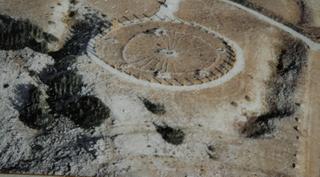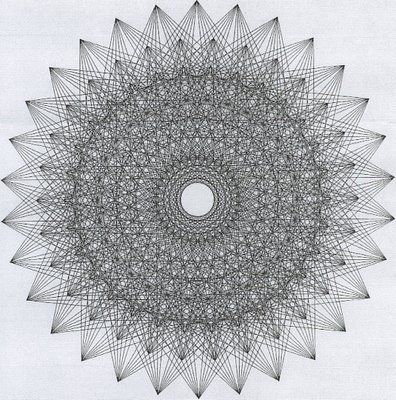
"The worst disease afflicting human kind is hardening of the categories." - Artist Bob Miller.
Well I having been watching the topics of
Categorically Not site created. I see such fine visitations by those who have ventured into the science, asking for responsibility of mind in science, be given to society on a platform, as a fine and ethical reporting/lectures, on where science/other issues, are today?
That they had ventured beyond the safe haven of science, to talk about
"intuition of a kind", held to thoughts on subjectivity made me think.
So things less likely to be held in the role of experimental validation( and psychological modelling has learnt to bear the brunt of scorn by many science minds?) that we might like to see physical processes and evidenced to date, also, as a kind of invitation to think about the roles subjectively of modelled thought about intuition worked, revealled as common today in practise?
Peak experiences (wikipedia 17 April 2006)
Peak experience is a term used to describe certain extra-personal and ecstatic states, particularly ones tinged with themes of unification, harmonization and interconnectedness. Participants characterize these experiences, and the relevations imparted therein, as possessing an ineffably mystical (or overtly religious) quality or essence
The question I might have placed up front here, is if such thoughts about intuition are born to what it would constitute, would one have said, a close relation to "Peak experience"? What would any consolidation of the individual represent in it's wholeness, if such an actualization moment was percieved for a short time, that such gains made by the work and study of, found it's application would have been granted in the moment of one's solitude? As one who gazed into the stream, or one who found in such a place that would help the mind in its efforts to raised the packet from the probability of all possibilties, as an enlightening moment?
From whence would all such idealizations emerge, that such an tonality of thought would embrace itself as a self actualized moment in the connection to the value of all probabilites with this peak moment? The probability of all things needed a resource and commonality from which all minds could draw some comparison. Where was this moment of recognition? A harmonical Oscillator of a kind, possibly? The basis of all reality existed in some form self described harmonical expression?

1908-1970
by Dr. C. George Boeree
Abraham Harold Maslow was born April 1, 1908 in Brooklyn, New York. He was the first of seven children born to his parents, who themselves were uneducated Jewish immigrants from Russia. His parents, hoping for the best for their children in the new world, pushed him hard for academic success. Not surprisingly, he became very lonely as a boy, and found his refuge in books.
What I had been working towards here in the pass couple of years is evidence by the archive to the right.
It has been a interestng experience trying as best I can to see where science was going. What was being held at the forefront of science knowledge, in regards to the theoretical idealizations, that were born to push insight, and perception deeper into the coming realities. The cognition of what might be borne in mind, that any emergence might have revealled of itself in the aspect of new geometries formed to consolidate all geometries that currenty exist?
What shall these be in the mind where cognition is born out of the reality about our being?
Surprizingly, as one learns about themself, the life experience seems to become clearer, as we progress along the "road of independance." Learning curves, that keep us so occupied, that the life's lesson might never seem ever finished, as we progress through one goal or another. Find, the mind flowing and growing. IT had a path which we might have never had known, had we not realized what it had amounted to in realization? It's work?
What could the intellect become if it held all it's intention to "abstract form" in mathematics, that it never found the associations it did and were needed in pushing into those deeper realities? There was a point it no longer worked, and such a place held in the microcosmic view, was still part of a much larger cosmological view? Can this not be so?
How can a speck of a universe be physically identical to the great expanse we view in the heavens above? (Greene, The Elegant Universe, pages 248-249).
Above it all, there were ideas in my mind that biased the way I talked and wrote, that I saw beyond what the intentions were about our participation into forging the reductionistic view, as some part of the greater whole? Why, I recognized the probelmatic koan( can I call it that) revealled in Brian Greene's wording that guided my thought process.
This was labelled as an liminocentruc structures, and within the context of this blogger experience of writing, I wrote about them historically, as a place visited, and as images that arise in mind, that could have represented aspects of our wholeness.

The mandala can also be an image of eternity cycling through time and as such images soul's and Nature's circular journeys, as they are reflected in, for example, the Native American Medicine Wheel, in seasonal, rebirth and karmic cycles, in mythic journeys of going out and returning changed to one's point of origin, and in the zodiacal wheel as life's twelve archetypal stages of personal growth.
This cyclic transformation is also at the heart of ancient Chinese meditation. When the spiritual light in the body moves through rhythmical breathing in a circle, all the opposite energies of heaven and earth, sun and moon, light and dark, are crystallised and form what the Chinese called the Golden Flower, an inner mandala imaging the balanced, open and centred heart.
Maybe, mandalic in origins, that such symbols revealled the deeper insight of the soul who had travelled and secured the "parcel of thought gained" as packages to be born in mind, to surface time and time again?
What use to loose our pursuates to self actualization, and immmediate recognitions of that peak experience, to have found Maslow had created a pyramid of a kind? It had already rested deeply in my own mind's creations, as a model formed. Can I progress his thoughts and his models mine. I most certainly can, and I have the history to prove this, as I incinuate from what is baised in my own views. My writing.
Who is Abraham Maslow, that such idealizations would amount to a psychological veiw I engaged in just the last couple of days or so, that I'd found some association too, model depictions, that I myself had created.
Consider this the base of the pyramid and the four faces, and what value this insight that such perfection could have arsien from Maslow's hierarchal renditions towards self actualization, that the lower centers of humanity would have been it's struggle in the heart, to have become actualized in the heart of mind, as a transcendance of thought, gained?
It was with some historical perspective that having spent years studing, that such model was produced. Which guided my own wording and thinking as I developed. Befuddle readers, as to the demands for a more clearer kind of writing.
Asked, if the most predominante language should be, I too had said math, but most will say english. I give my reasons why, for math, yet so inexperienced am I it's many forms:)

The archetype has no form of its own, but it acts as an "organizing principle" on the things we see or do. It works the way that instincts work in Freud's theory: At first, the baby just wants something to eat, without knowing what it wants. It has a rather indefinite yearning which, nevertheless, can be satisfied by some things and not by others. Later, with experience, the child begins to yearn for something more specific when it is hungry -- a bottle, a cookie, a broiled lobster, a slice of New York style pizza.
The archetype is like a black hole in space: You only know its there by how it draws matter and light to itself.
Less comprehensible no doubt, without out the reader having has some idea of where I was speaking from? No, not from some "other worldly" person like PLato, but an "archetype used" to progress the thoughts of many who had themself engaged in science, about the greater perception/inspiration, as we moved back from the Plato's Cave, to gain in light, about man's imprisonment. As we have "unchained the mind" from the links/matter that bind us.
So you might say what changed?As I read some more on Maslow, I learnt about many things about my own mind that felt true, to what was being read. That I understand now, that the first part of the lesson about self and it's motivation with years of study, might had seen and been lost, had I not now concluded some thoughts about what I have gained in recognition about self? Time in perception about the past allows this recollection and reminincing now focused forward.
What could be added to Maslows hierarchal diagram of thinking mind and about the steps of progression had some kind of self actualization been bound in the determined mind of one who was not a conformist? To any degree, who liken the freedom to study outside all of the rules of engagement, was still very respectful of the halls of higher learning.
Engaging life as a father and husband, the early years and education did not ever reveal that I would be capable less than the man working ever with his hands and mind to be paid? That his family needed to be supported and growth accomplished as any child would in nurture. While amidst this, a experimentor, and philosopher, as student of life in father felt.

You had to be motivated( what kind of motivation is seeking, what is it's base), or why would you waste your time travelling through the idealizations we do encounter. Facing to see what modulation of thought might do in seeing anew? You had to rise above those lower centers. Such a climb, to the heart in mind(some might know of it's truth comparison in images shown here. Was part of the actualization process after attending class?

Alchemcial processes might have shown such step processes engaged in the process of purifying(psychological), as well as leading to the understanding of who the king was(ego) and how mastery would have been gained over?




.svg.png)



.svg.png)







